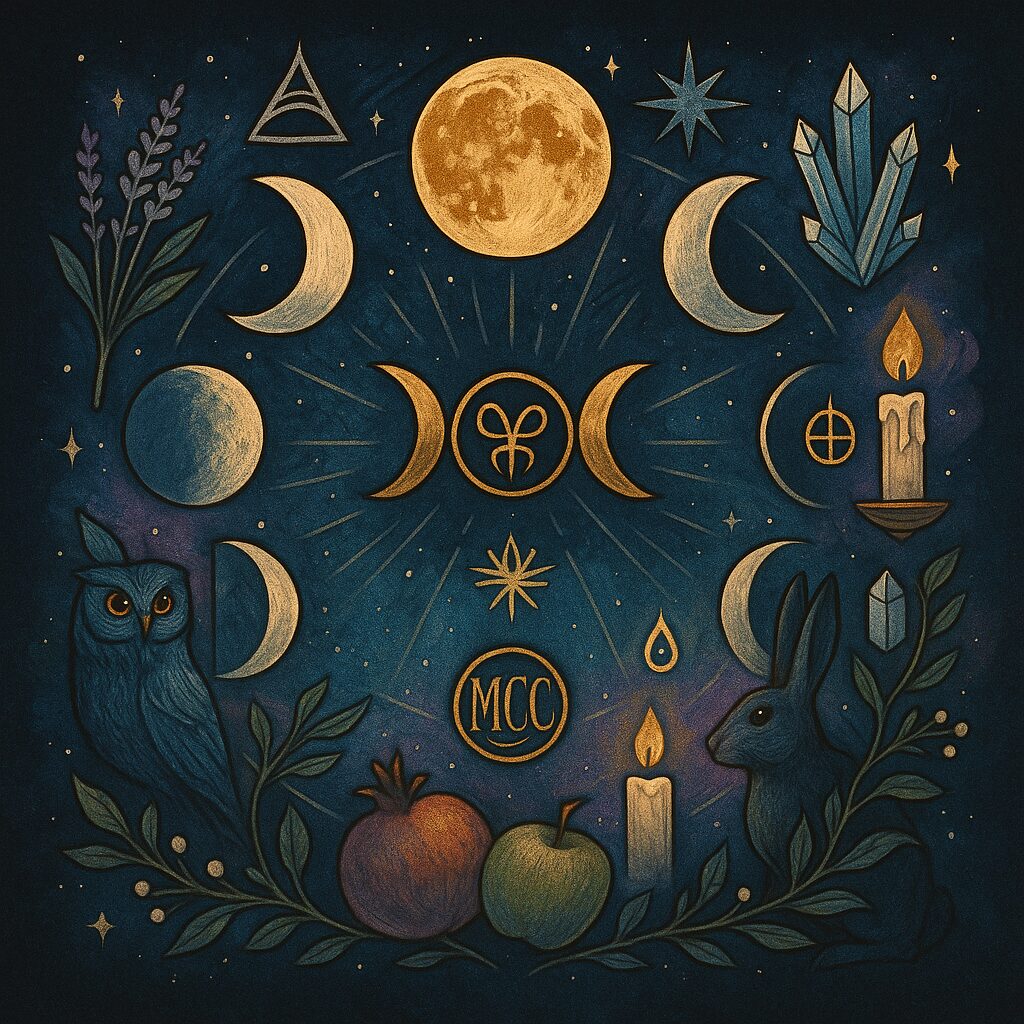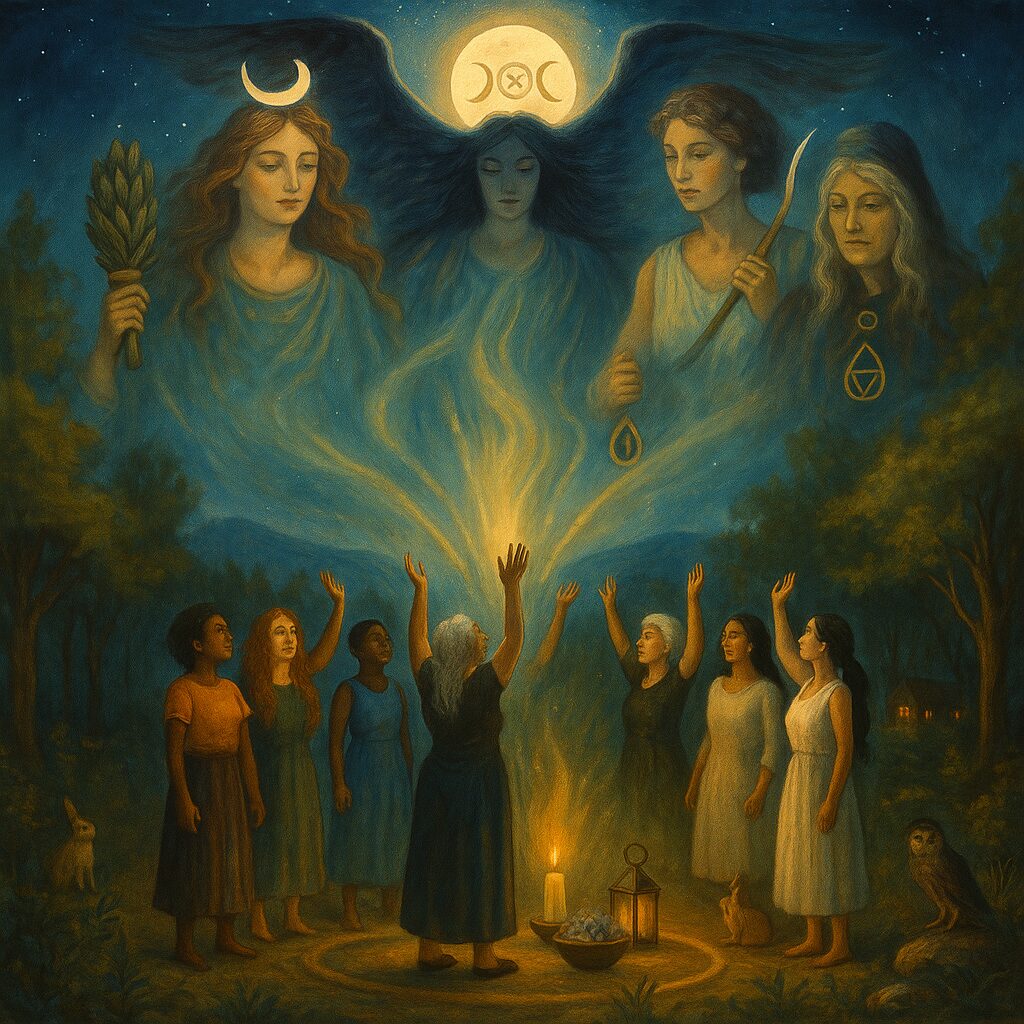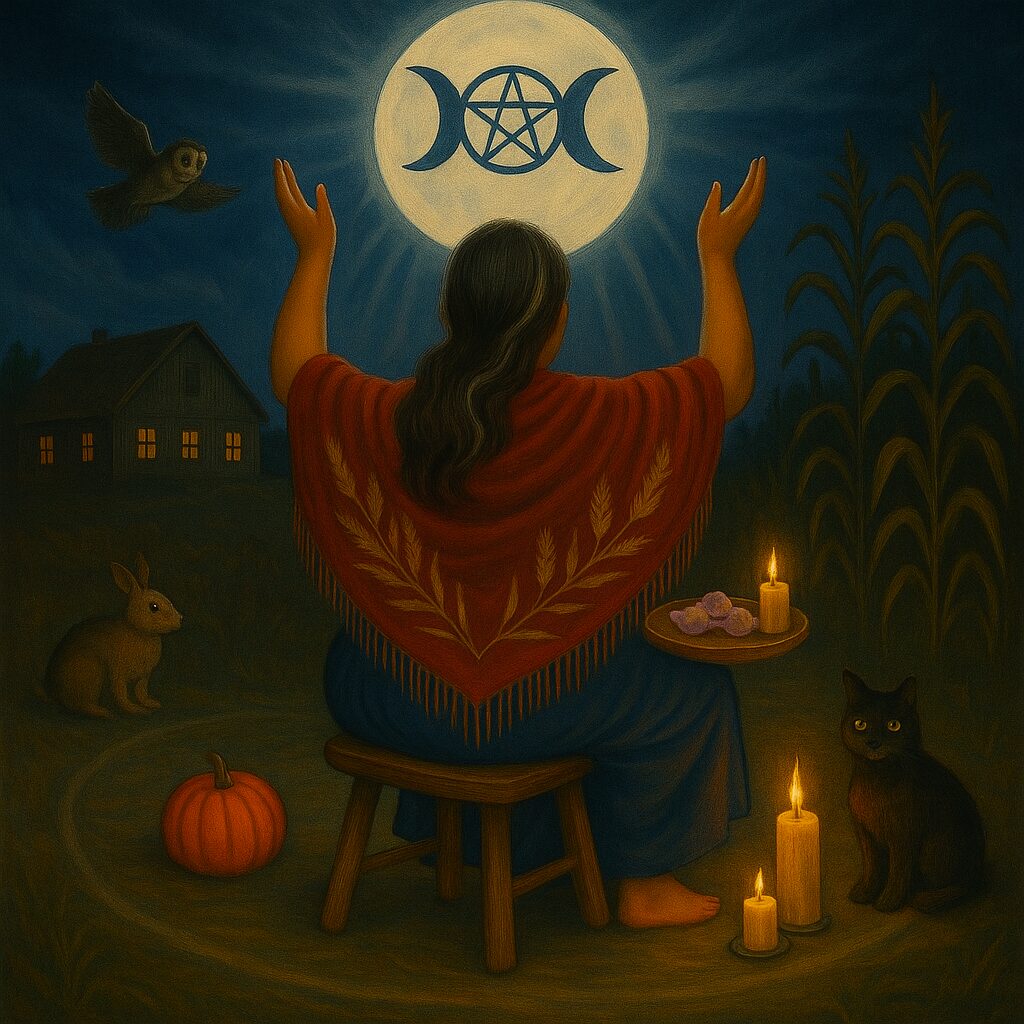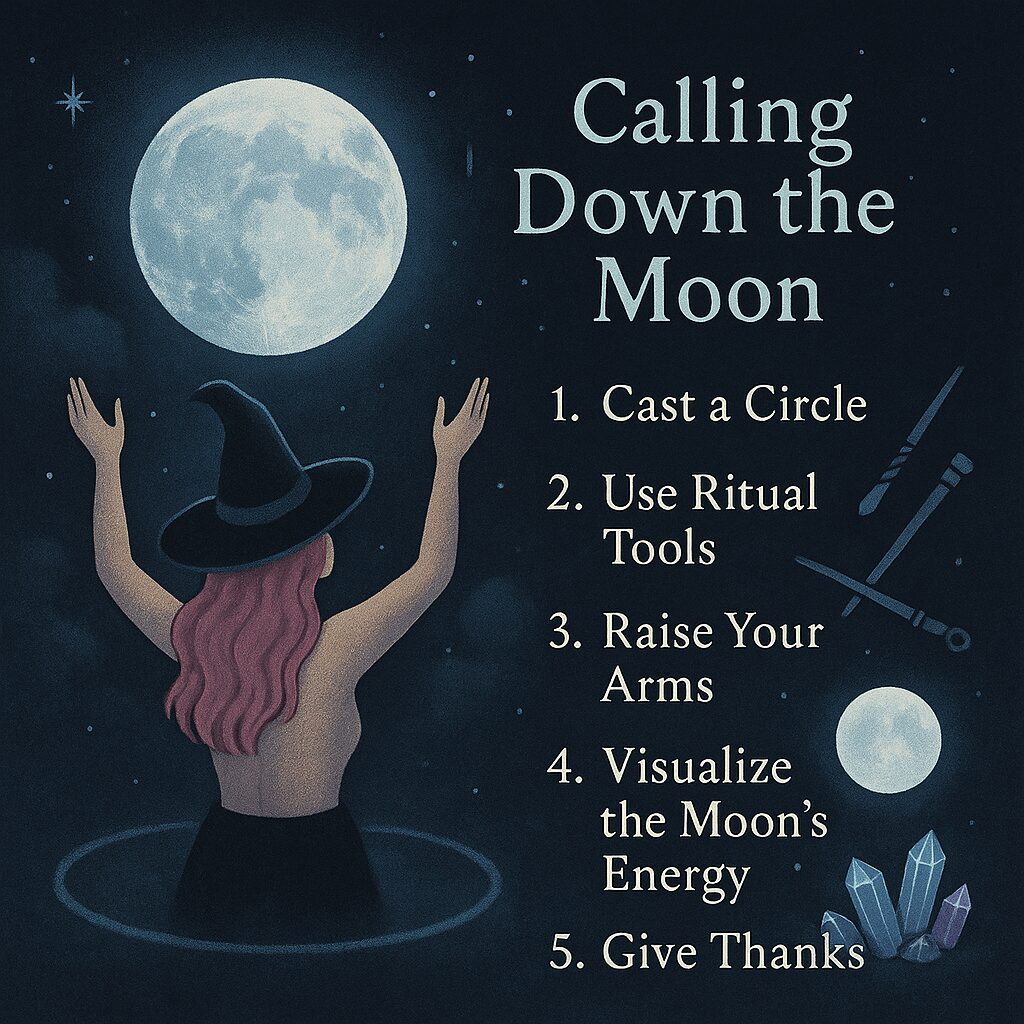Full Moon Magic: An Esbat of Power, Presence, and Reflection
Among the rhythms of the natural world that witches honor, none hold such deep and luminous sway as the Full Moon. Her bright face, suspended in the velvet dark, has called to humans since the dawn of time. To witches, mystics, and those who walk between worlds, the full moon is not merely a poetic flourish in the sky—it is an energetic gateway, a ritual calendar, and a living archetype of wholeness, intuition, and cyclical power. The term Esbat, used within many Wiccan and modern neopagan circles, refers to ritual gatherings held during the phases of the moon—most often at the full moon, though some include the dark or new moon as well. Unlike Sabbats, which follow the solar agricultural calendar and mark the Wheel of the Year, Esbats are tied to the lunar current. They are nights for magic, reflection, celebration, and connection—both to the divine and to one’s own intuitive depths. As Scott Cunningham writes in Wicca: A Guide for the Solitary Practitioner, “Sabbats are the days of power, but Esbats are the nights of power.” The full moon’s light reveals both the world and the soul with startling clarity, inviting spellwork, divination, healing, and vision.

Historically and mythologically, the moon has been revered across pan-European traditions as a feminine force of rhythm, change, and fertility. In ancient Greece, Selene was the embodiment of the moon herself, driving a silver chariot across the night. The Romans honored Luna, while Artemis and Hekate governed different aspects of moonlight—huntress and witch, respectively. In Celtic lands, the moon was associated with Arianrhod, the weaver of fate, and with the tides of life and death that shaped Druidic mystery. Each of these figures reflects a cultural facet of the moon’s mystery: celestial, wild, intuitive, shadowed, wise.
In a more contemporary lens, authors such as Starhawk have restored the moon’s sacred feminine energy as central to earth-based spirituality. In The Spiral Dance, she writes: “The moon moves the tides and the womb. She calls to the intuitive and the imaginative. She teaches us that we too wax and wane.” For practitioners today, the full moon is a mirror—not only of divine archetypes but of our own magical potential. She reveals where we are bright and whole, and where we have gathered power since the dark moon’s descent.

The idea of working magic during specific lunar phases is not a modern invention—it reaches deep into the roots of folk magic and cunning craft. In parts of early modern Europe, moonlight was considered essential for the effectiveness of charms, elixirs, and night-based herbal gathering. Grimoires, or magical handbooks from the Middle Ages through the Renaissance, often included lunar tables for determining the best nights to summon spirits, scry with mirrors, or cast love spells. The Key of Solomon, one of the most influential grimoires of the Western magical tradition, explicitly divides rituals by moon phase.
By the 20th century, Wiccan founders like Gerald Gardner and Doreen Valiente helped formalize the idea of the Esbat, merging folkloric magic with ceremonial ritual. Esbats became monthly gatherings where the coven could raise energy, honor the Goddess, draw down the moon, and celebrate the body and spirit as sacred. While not all witches identify with Wicca today, the Full Moon Esbat remains a powerful anchor point for lunar-based ritual practice.

In contemporary witchcraft, the full moon continues to be a favored time for magical work, especially those intentions that involve clarity, release, charging, manifestation, and celebration. While Esbats are framed through the lens of the sacred feminine, it’s important to remember that lunar magic is for all witches, regardless of gender. Masculine-aligned and gender-fluid practitioners also find deep connection in Esbat rites, working with the moon not only as a maternal force, but as a mirror of internal cycles, intuition, and magical potential. The Esbat is the peak of the lunar cycle, a time when energy is most available and visible. Many witches choose this phase to:
- Perform divination with tarot, pendulum, or scrying bowls
- Conduct cleansing or banishing rites
- Charge tools, crystals, or water under moonlight
- Celebrate milestones, rites of passage, or personal achievements
- Gather in community, whether virtually or in circle, to share ritual, chanting, or movement
The Draw Down the Moon ritual, a practice often associated with traditional Wicca, is a central full moon rite in which the Goddess is invoked or invited to descend into the body of a priestess (or practitioner), who then serves as Her voice. This act of channeling divine presence is symbolic of deep communion: the moon as mother, mirror, and mystery entering the flesh of the sacred self.
At the same time, solitary witches may celebrate more simply: lighting candles, journaling, or standing barefoot under the moon to feel its pull on the body’s own tides. The full moon’s magic is accessible to all who approach with respect and presence.

In an age that often encourages disconnection from natural cycles, Esbats offer a counter-rhythm: a way to mark time not by the ticking clock, but by the pulse of the earth and sky. By returning monthly to ritual, witches build a sacred discipline of presence—checking in with self, spirit, and intention under the gaze of the full moon. Esbats remind us that not all power is loud or fast. The moon rises slowly, and yet she transforms the world by degrees.
As Ronald Hutton notes in The Triumph of the Moon, modern witchcraft has synthesized ancient, folkloric, and poetic traditions into a new and living practice. The Full Moon, more than just a holdover from myth, becomes a living altar in the sky—something witches across cultures can look to with awe and intention.
To practice moon magic is to remember that time is not linear, but cyclical. We rise and fall, we wax and wane. The Full Moon is not an event—it is an invitation. It asks us to pause, to notice what is illuminated, to give thanks for the growth that has come, and to begin again in grace.
In this way, the moon becomes more than a phase in the sky. They become a priestess, a presence, and a practice.

